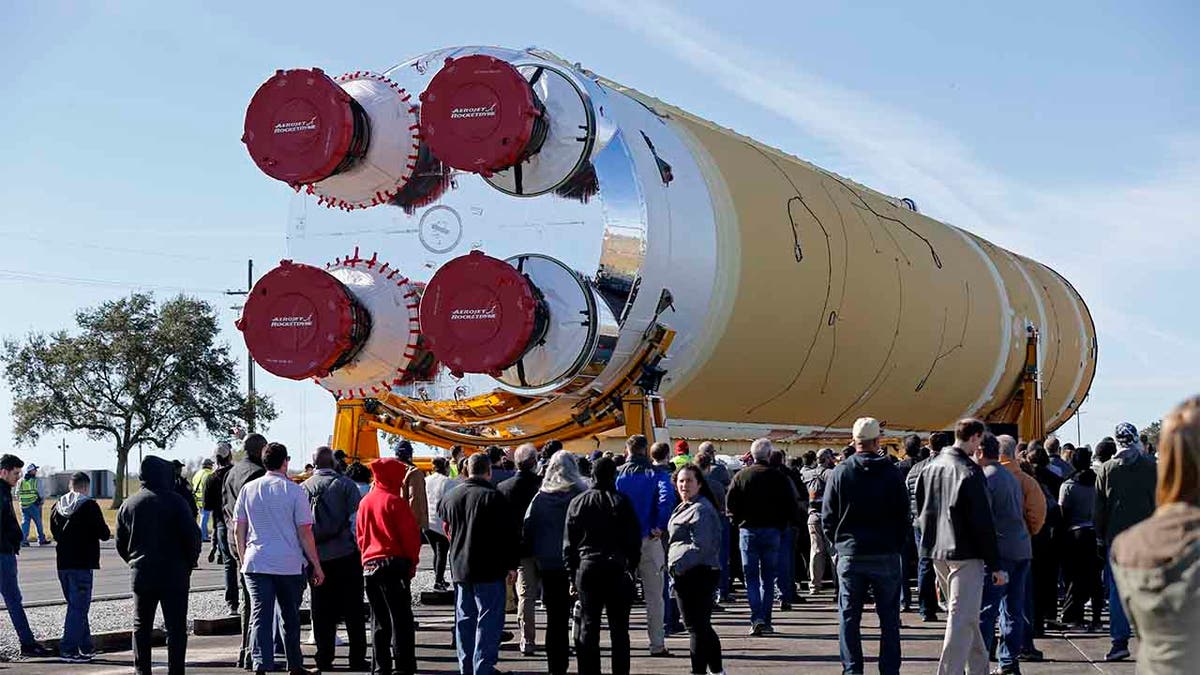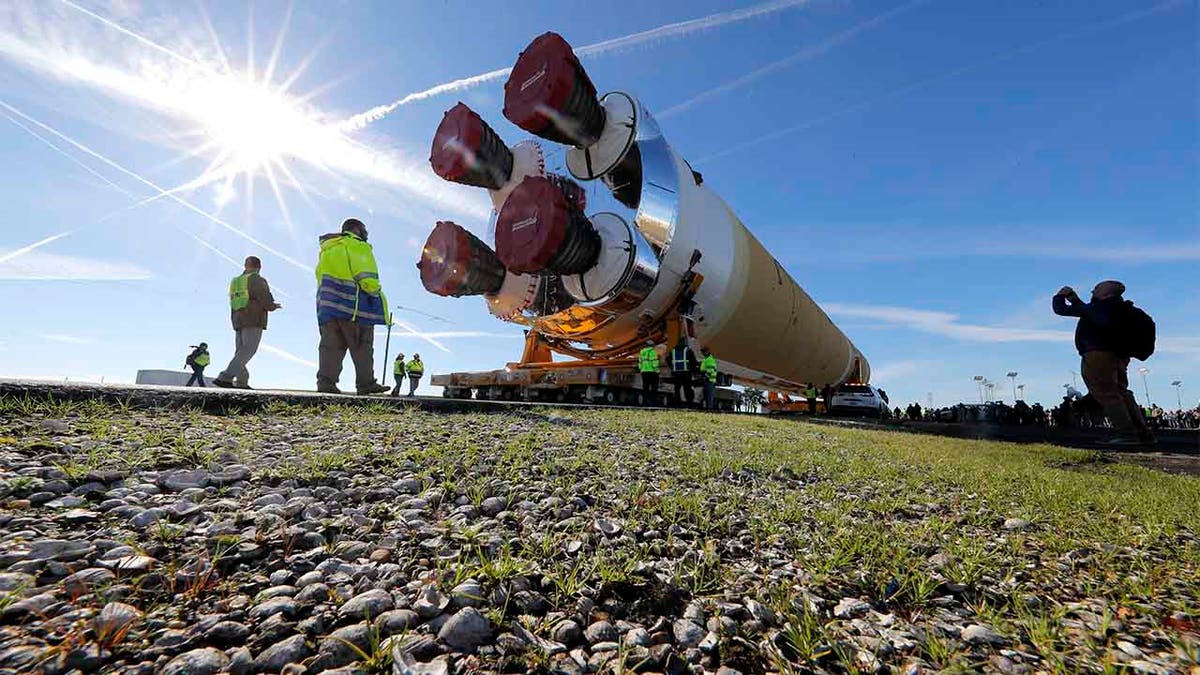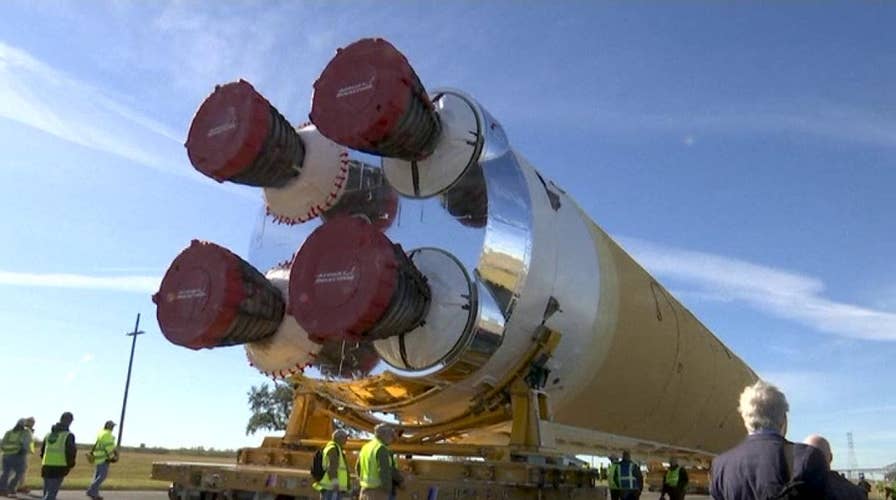Core stage of NASA's Artemis 1 rocket rolled out for test firing
Core stage of NASA rocket rolled to river for testing.
Like a giant float for Mardi Gras, a massive part of a new NASA rocket system was wheeled from a New Orleans spacecraft factory on Wednesday to a barge that will float it up the Mississippi River for testing.
The recently completed core stage of NASA’s Space Launch System (SLS), which measures 212 feet from end to end and more than 27 feet in diameter, was to be taken to the Stennis Space Center in Mississippi, about 50 miles northeast of New Orleans, The Associated Press reported.
Space Launch System rockets are expected to eventually take astronauts to the moon as part of NASA’s Artemis program.

Employees and contractors watch as the core stage of NASA's Space Launch System rocket, that will be used for the Artemis 1 Mission, is moved to the Pegasus barge, at the NASA Michoud Assembly Facility where it was built, in New Orleans. (AP Photo/Gerald Herbert)
The core stage was transported from the Michoud Assembly Center in eastern New Orleans to the barge.
NASA'S ALIEN PLANET HUNTER DISCOVERS ITS FIRST EARTH-SIZED PLANET IN 'HABITABLE-ZONE'
It will undergo tests at Stennis ahead of the first Artemis launch, currently planned for 2021, according to Tony Castilleja, a systems engineer with the Boeing Space Team.
The SLS core stage, with four huge engines, is the largest rocket stage NASA has assembled since the Apollo stages that first powered crewed missions to the Moon.

Workers and contractors who worked on the core stage of NASA's Space Launch System rocket, that will be used for the Artemis 1 Mission, follow the rocket as it is transported to the Pegasus barge at the NASA Michoud Assembly Facility where it was built, in New Orleans. (AP Photo/Gerald Herbert)
It will be used for Artemis I, a test flight without a crew.
Artemis II is planned to send up a crewed spacecraft.
The third mission, Artemis III, would put a man and woman on the south pole of the moon, with an eye toward a continued presence that would lead eventually to a trip to Mars.

Security and safety personnel walk with the core stage of NASA's Space Launch System rocket, that will be used for the Artemis 1 Mission, as it is moved to the Pegasus barge, at the NASA Michoud Assembly Facility where it was built, in New Orleans. (AP Photo/Gerald Herbert)
The core stage is the spine of the SLS rocket.
Its' four RS-25 engines will produce 2 million pounds of thrust. The liquid hydrogen tank and liquid oxygen tank hold 733,000 gallons of propellant.
In addition to the tanks, the core stage houses the vehicle’s avionics system, including the flight computers, the vehicle navigation system and the main propulsion system, which feeds propellant to the engines.
CLICK HERE TO GET THE FOX NEWS APP
NASA is working to land the first woman and the next man on the moon by 2024.
The Associated Press contributed to this report.

